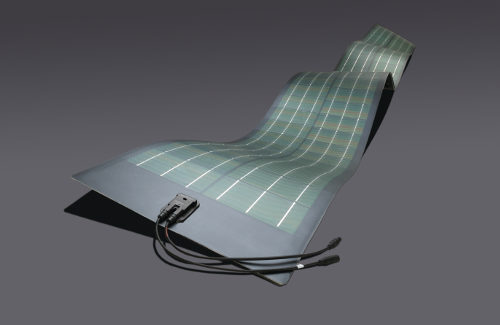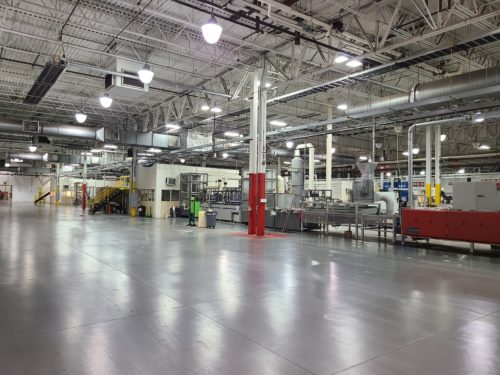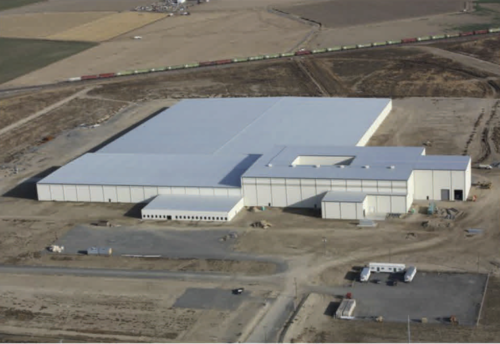As we close out 2020, the solar industry prepares to enter its final scheduled year with tariffs on imported solar panels. The Trump administration repeatedly said the tariffs were imposed to re-energize U.S. solar manufacturing. And while we did get some significant capacity additions in 2019, market revitalization has petered out since.
With two manufacturers closing shop and only one new entrant, the U.S. solar panel manufacturing industry actually lost 100 MW of production capacity in 2020 — all in thin-film technology. The crystalline-silicon market — which the tariffs aimed to prop up — was stagnant this year, but it will get a big boost in 2021 with a new cell and module manufacturer opening with gigawatt plans.
In the meantime, here’s a review of the domestic solar panel manufacturing market this year. And be sure to check out our full list (and map!) of U.S. producers here.
Two U.S. closures: MiaSolé and Global Solar
The U.S. solar market said goodbye to two CIGS thin-film manufacturers this year: MiaSolé (Santa Clara, California, 150 MW) and Global Solar (Tucson, Arizona, 50 MW). Although thin-film solar panels are not part of the tariff order, demand for the specialized modules will likely never match crystalline silicon’s — produced domestically or not. Hanergy, the Chinese parent company of MiaSolé and Global Solar, began laying off American workers in late 2019 while production went into a “temporary shutdown to reduce costs.” Many employees were furloughed through 2020, and PV Magazine reported that MiaSolé received loans through the Paycheck Protection Program (PPP) that came about during COVID-19. It seems unlikely that either thin-film manufacturer will restart production.
2020’s sole addition: Toledo Solar
Toledo Solar has set up in the former Willard & Kelsey Solar Group building in Perrysburg, Ohio, to manufacture CdTe panels for the residential and commercial solar markets.
Currently, Toledo Solar is operating on one shift and should be up to two by January 2021. Once three shifts are hired, the company will reach its 100-MW production capacity.
Aaron Bates, chairman of Toledo Solar owner Atlas Venture Group, said the manufacturer is already selling panels directly to installers and has found a good niche in the non-utility market. This also means it won’t be competing with CdTe powerhouse First Solar.
“We hold First Solar in a high regard. I’m a shareholder,” Bates said. “We don’t consider Toledo Solar to compete with First Solar. That’s one of the decisions we made very early on. If we were going to investigate going into solar, we would only do it if there was a niche market we could service that would not compete with First Solar. They are utility-scale. Toledo Solar services the non-utility market in the United States.”
First Solar did recently announce it would start supplying the community and commercial solar markets with panels through distributors, but Toledo Solar specifically sees its panels making a home in residential rooftop projects. The company’s frameless panel (similar in size to First Solar’s Series 4 module: 600 mm x 1,200 mm and 115 W) is aesthetically different than traditional crystalline-silicon modules. Thin-film solar panels have better resistance to shading and lower degradation rates than crystalline silicon, so Toledo Solar could make a play for difficult installations and in warmer climates.
Read an extended profile on Toledo Solar here.
Big things on the horizon for 2021: Violet Power
A brand-new solar company has announced a major addition to U.S. manufacturing with its gigawatt-production plans. Violet Power is setting up in a 600,000-sq.-ft facility across the street from REC Silicon in Moses Lake, Washington, and will have 500 MW of crystalline silicon solar cell manufacturing capacity by Q2 2021 with another 500 MW of full panel production by the end of next year. The plan is to eventually scale to 5 GW of production and 1,000 manufacturing employees. Once cells come off the line, Violet Power will be the only silicon solar cell manufacturer in the United States, now that Panasonic has left the Buffalo, New York, facility it shared with Tesla.
Violet Power’s solar panels will use interdigitated back contact (IBC) technology licensed from ISC Konstanz in Germany along with a durable polyvinyl butyral (PVB) encapsulant. In addition, the IBC cell architecture will be paired with an aluminum flex circuit developed by SunFlex Solar out of Arizona.
“The printed circuit board is a large sheet of foil that is bonded to the solar cell which allows for about 85% of the metal on the solar cell to be eliminated. Typically, those metal layers are expensive silver-based materials,” said Violet Power CEO Charlie Gay. “So, we can take a lot of the cost out of the back-contact solar cell by substituting aluminum foil, which [also allows] the module to operate at a lower temperature.
“The lower temperature will mean greater energy delivery, and it’ll substantially extend the time of use in the field before folks begin to think about decommissioning or recycling,” he continued.
Violet Power panels are expected to come with a 50-year production warranty.
Read an extended profile on Violet Power here.











We had talked with REC at the beginning of this year regarding a plan to build a mono/multi silicon wafers production line in the REC old site for the low cost electricity supply from hydro power near by. But the plan was stopped due to not enough cellular production in the States to consume the planed wafer production.
Hi Kelly,
Charlie Gay showed a picture of a Violet power glass/glass panel in a Taiyang News event friday 4/12.
Would be super if you could tell us more about the panel. 0,7 mm flexible glass and plastic frames with integrated mounting. He kind of redefined what a glass/glass panel is
Just looking at the size of the Violet Power plant, there’s a lot of room for solar PV on that roof. Perhaps the first large product run should be about 27,000 of their solar panel product to help run the plant. Right around 144MWp for daily manufacturing energy use.
Manufacturing solar PV with solar PV makes that tired argument, “How much fossil fueled generation was used to manufacture these panels?” The less energy overhead this plant has, the better it can compete with China’s tendency to have large Government subsidies keeping Chinese panels low in price.
Electricity in that region is mostly hydro and inexpensive.
The area is also popular for cloud storage facilities.
Yes hydro power is “usually” cheap and yet when one is commercial or industrial plant operations, there are often “demand charges” or TOU rate spiking that drives up electricity costs, sometimes up to 50% of a commercial or industrial plant electric bill is some kind of electricity rate spiking demand charge. There are constant TD&D and “fuel” charges bundled into every electric bill. When one installs solar PV on their operation, one can store some energy for later use erasing demand charges and decreasing their electric bills by up to 50% regularly. Cheap power is relative, solar PV power eliminates a lot of the inefficiency one pays on electric bills from the utility.
The site will be surrounded by a 350 MW solar farm
Do you have a source on this information?